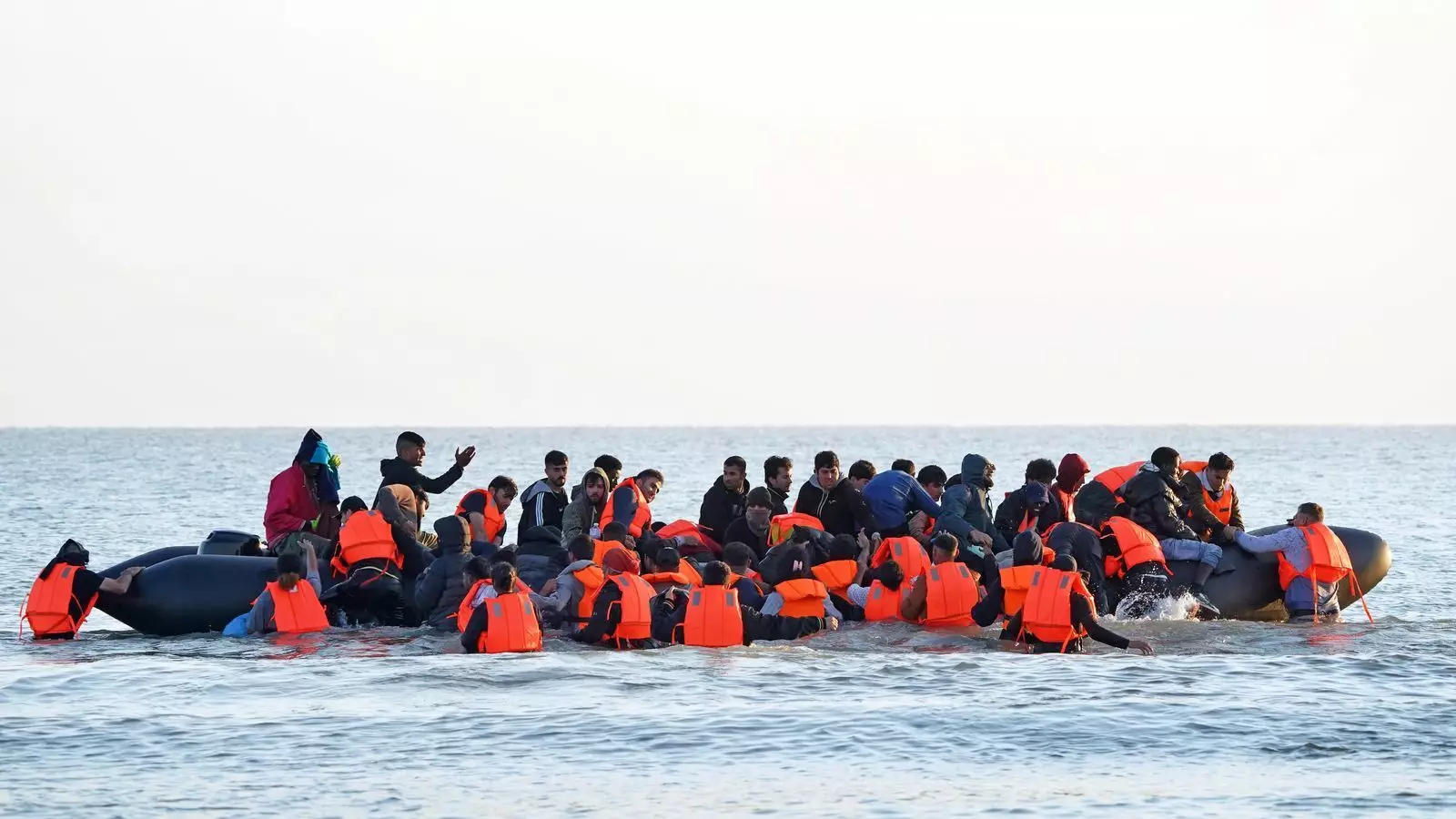The issue of immigration across the English Channel has been escalating, as evidenced by provisional government figures from 2024, which report that 36,816 migrants arrived in the UK via small boats. This number marks a significant increase of 25% from the previous year’s total of 29,437. While this rise might suggest a burgeoning crisis, it is essential to note that these figures represent the second-highest recorded since the data began being tracked in 2018. In contrast, the numbers for 2024 still fall 20% short of the peak of 45,774 arrivals seen in 2022, highlighting the fluctuating but persistent nature of this complex issue.
The statistics reflect not only a growing trend but also underline the alarming risks associated with crossing one of the world’s busiest shipping lanes. As underscored by the Home Office, the tragic reality of this journey was evident in 2024, which has been noted as the deadliest year for Channel crossings, with the French coastguard reporting 53 fatalities. Unfortunately, this grim statistic was not detailed in the initial government data, demonstrating a significant gap in transparency around such a critical humanitarian issue.
Profile of Migrants and Legal Pathways
A key aspect of the rising numbers involves understanding the demographics of those arriving. Many of these individuals hail from countries facing ongoing conflict or humanitarian crises, such as Ukraine and Afghanistan. For a portion of these migrants, legal routes to the UK exist, but they are only available to recognized refugees and certain family members. The pathways for many others are perilous, often involving engaging with criminal enterprises that exploit desperation. The stark reality is that not all refugees qualify for secure and legal passage, leaving numerous individuals vulnerable to the machinations of people smugglers.
As the UK has tightened its immigration policies, the challenges for those seeking refuge have intensified, pushing many to resort to unsafe methods of entry. The complexity of these legal frameworks raises significant questions about the effectiveness of the current system, especially regarding how it affects those trying to escape dire circumstances.
Political Response and Future Implications
The political landscape surrounding immigration, particularly relating to Channel crossings, is fraught with contention. Both the Conservative and Labour parties have made public commitments to reduce the number of migrants making perilous journeys across the Channel. Labour’s approach, promising to “smash the gangs” responsible for facilitating these crossings, reflects a growing recognition of the need for systemic change. However, the focus on cracking down on criminal networks must also be balanced with compassionate discourse aiming to address the root causes of migration.
The ongoing situation presents significant implications not only for policymakers but also for the communities receiving these migrants. As the conversation around immigration continues to evolve, it is crucial to instill a sense of humanity into the policies shaping the future of migrant experiences. The statistics and narratives surrounding Channel crossings should not merely be numbers but rather part of a larger dialogue on human rights, safety, and global responsibility.
As we delve deeper into the complexities of migration across the English Channel, it becomes increasingly clear that solutions must encompass both humanitarian support and effective governance to ensure that individuals do not have to risk their lives for safety and security.



Leave a Reply